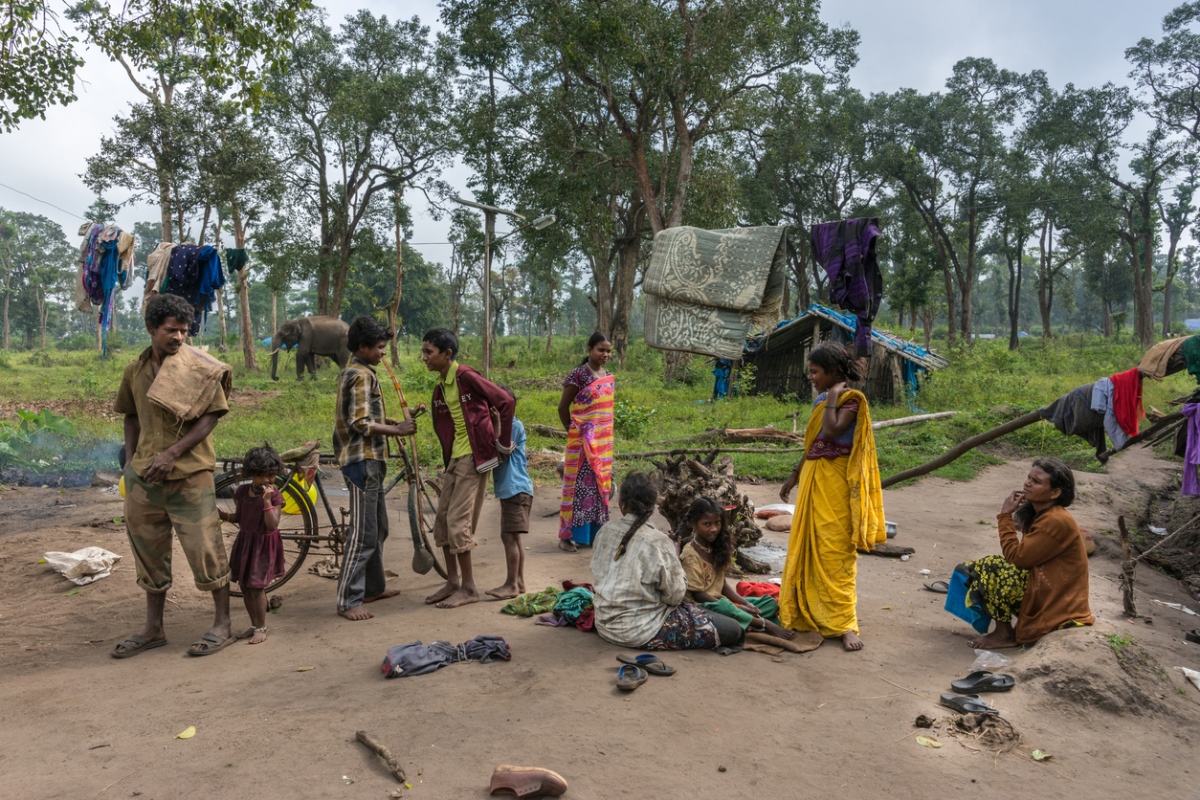Where shall I go!
Leaving this land,
For which I am only a trustee.
As a tribal, I am duty bound
To pass it on to the generation
next !
~ Bishnupada Sethi, IAS
Dehumanisation is very much a part of historical reality ever since the emergence of private property; humane policies are thwarted by injustice, exploitation and oppression.
A puzzling question is why do tribals, who for centuries have been self-sufficient and have managed their own socio-cultural systems without external intervention, now need protection, sympathy, and aid. In India, the regions where they live are predominantly forest areas enormously endowed with natural resources. Around 90 per cent of all coal and nearly 50 per cent of the remaining minerals are found in their habitats. Water and other essential resources abound in these areas.
So, why are they so poor? In spite of protection provided by the Constitution, tribals are exploited and identified as the most backward ethnic group in India. Tribals constitute 8.6 per cent of the country’s total population ~ about 104 million, according to the 2011 census. After Africa, India is the second country with a large number of diverse tribal communities. The tribal population is more than the total population of France and Britain and four times that of Australia. If all of them in India had lived in one state, it would have been the fifth most populous state after UP, Bihar, West Bengal and Maharashtra.
The tribal segment also consists of as many as 573 communities and each community has its own cultural as well as specific ethnic identities. But their lives are crucially linked to the use of resources that a forest provides. In a word, the forest occupies a central position in tribal culture and economy. Indeed, the tribal way of life is very much dictated by forest rights from birth to death.
The predicament of tribals is appalling. The Indian Forest Act (IFA) was enacted by the British in 1895 to establish control over forests. The singular purpose was to meet the need of timber. The Act had nothing to do with conservation. The illiterate, innocent tribes were absolutely unaware of the forest laws and their implications. The forest was their own abode. But the IFA truncated their centuries-old traditional use of forests and this severely affected their socio-economic, socio-cultural and socio-religious life.
There were widespread protests in the early 1930s against the act in Gondwana, led by Mahatma Gandhi. The movement was called Jungle Satyagraha. A large number of tribals were killed in police firing and the movement was brutally suppressed. Thousands were subjected to harassment and evictions on the pretext of being encroachers in their own land. Torture, bonded labour, extortion and sexual assault were the usual instances of oppression.
However, following the protracted struggle by the marginal and tribal communities to assert their rights over forest land, the Forest Rights Act (FRA), 2006 was enacted to undo the injustice done to the tribals and other forest dwellers. The FRA empowered communities to ‘protect forests, wildlife and biodiversity, and also to ensure protection of catchments, water sources and other ecologically sensitive areas.’ Regrettably, the good idea failed to work.
In reality, the FRA of independent India appears to be a hangover of the Act passed by the British. In the reckoning of the Raj, the Indian forests were meant to be exploited. This led to the contractor-culture; large tracts were leased out to entrepreneurs who exploited them to maximize profits.
Thus a rapid and massive degradation of Indian forests occurred. Such exploitation continued so aggressively that in three decades, from 1960 and 1990, the forest cover declined from 34 per cent of the land area to 18.7 per cent. However, India has marginally improved its coverage. It is now ranked 10th in the world, with 24.4 per cent of land area under forest and tree cover.
Under the forest policy of Independent India, the concession enjoyed by forest dwellers as a de facto right was taken away as several wildlife groups have opposed the FRA as being anti-conservation. Under the compulsion of maintaining at least one-third of the country’s land under forest, thousands of kilometres of tribal lands were encroached upon by the forest department. Even treeless land was not spared. The Forest (Conservation) Act, 1980 and the Wildlife (Protection) Act, 1972 didn’t protect tribal land.
It is clear, therefore, that State ~ as an entity of governance ~ is the encroacher. Tribal areas have been exploited for mining of minerals and setting up of industries and other development projects. The highly exploitative Mines and Minerals (Regulation and Development) Act 1957 is as draconian a law for tribals as was the Land Acquisition Act of 1894 for all farmers. There is no provision for consent, compensation or even consultation with the gram sabhas before undertaking mining operations.
As a result, thousands of Adivasi families have been displaced, turned into migrants or, at best, into daily contract labourers in mines that have destroyed their forest land and sources of water. Since liberalization, there has been an unprecedented entry of companies, including multinationals, for exploitation of resources in tribal areas.
The mining industry has had a negative impact on the environment. It is ironical that the tribes are held accountable, but not those who denude the forests for private gain and irreparably harm the environment and animal population in the process. Even the Mines and Minerals Amendment Bill 2015 has no provision for obtaining consent from tribals for mining operations; rather it strengthens the rights of private sector mining companies.
There has been a surge of economic development in the form of dams for power and irrigation, the building of roads, urbanization, mining, etc. The flip side of this sort of development is that it has evicted more than 42 million people.
The Parliamentary Standing Committee on the Welfare of SC and ST, in its report submitted to the Lok Sabha on 23 October 2008, observed, ‘Notwithstanding the Act and regulations to control alienation of tribal land, tribal people are being alienated from land in the name of development and due to insufficient amount given to them for their land, they migrate to other places in search of livelihood.’
The poorest and the most marginalized people are generally hit the hardest by eviction. The phenomenon is termed as statesponsored ‘Development Terrorism’. This results in a law and order problem and weakens the social structure. Malnutrition among tribal communities has reached horrifying proportions, with a large number of stunted (short height for age) children despite the natural food that is available in their habitat and constitutional protection.
After analysing the National Census Report 2001, National Health Survey 2005-06 and other related data, Angus Deaton, Nobel Laureate in Economics (2015) concluded that at a time when the rest of India is witnessing an increase in height, tribal people are becoming shorter.
Social workers working in Jharkhand have established that the average height of Pahariya community has reduced by 8 cm within 100 years. Tribal malnutrition is indeed a hidden epidemic. The problem of tribal malnutrition cannot be solved by providing subsidised food through the Public Distribution system alone. It assures food security, but it fails to ensure nutritional security for malnourished tribals.
‘Beware the fury of the patient man,’ John Dryden had warned three hundred years ago. We can hardly afford to ignore the unending patience of the neglected and deprived tribals as there are enough indicators to suggest that they have risen in fury. To assuage tribal fury what is needed is broader structural intervention that will involve tribals themselves as participants in the development process.
(The writer is a retired IAS officer.)











